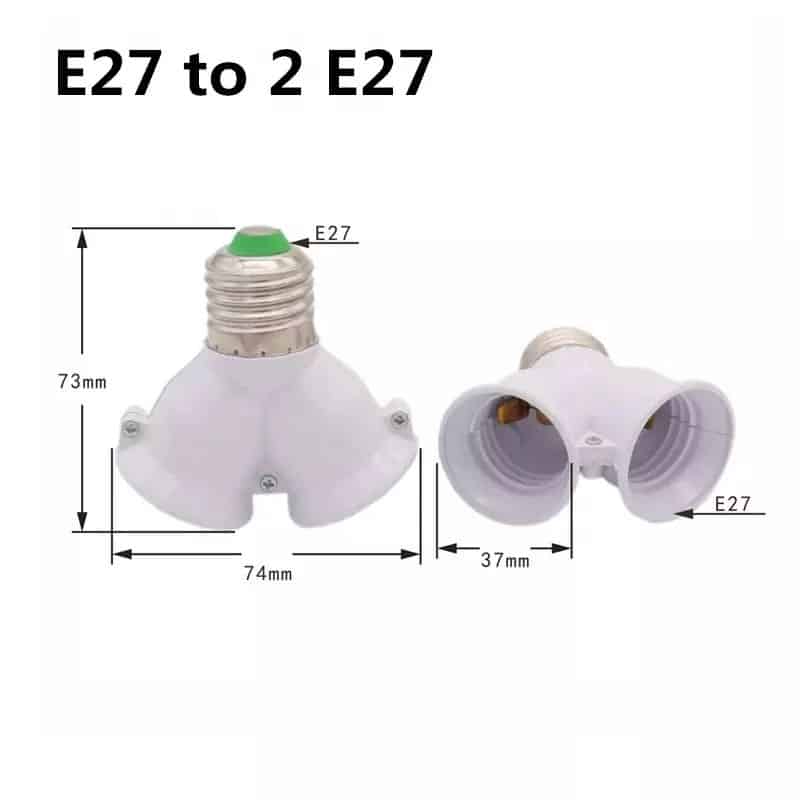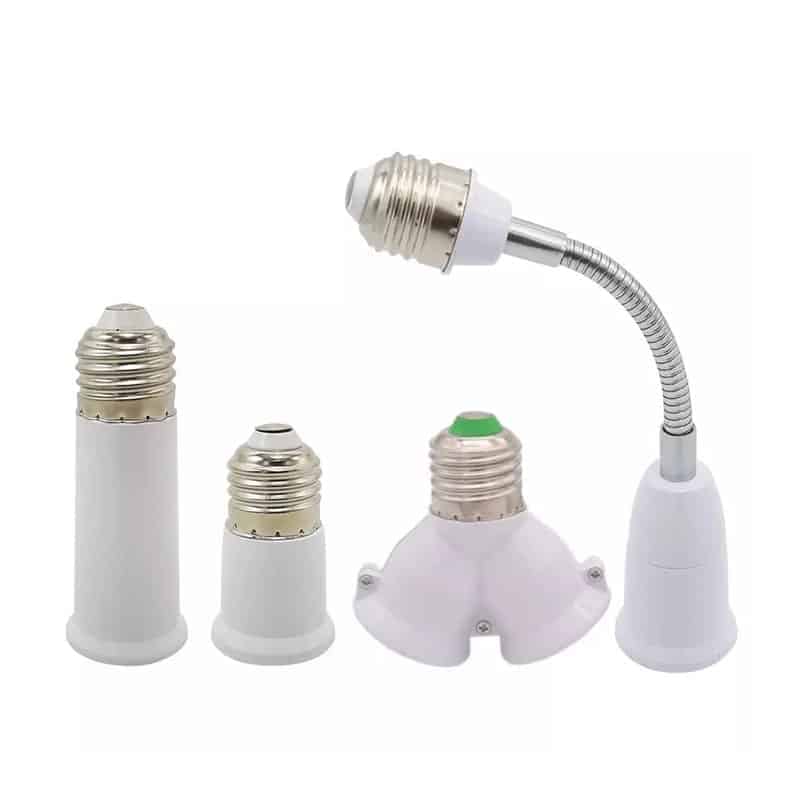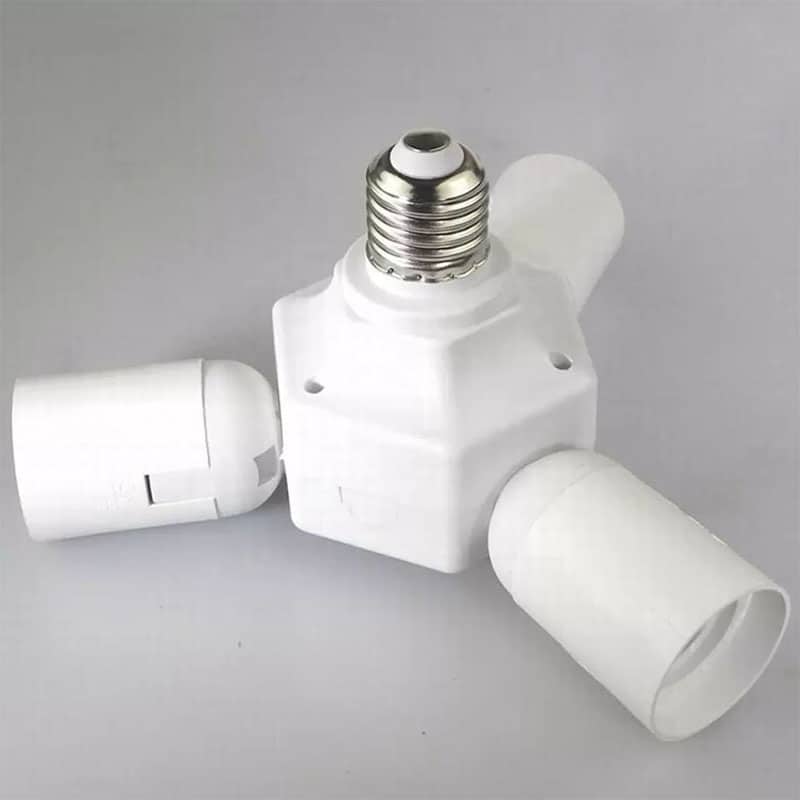In some cases, you may want to increase the light in a room or space without adding more fixtures. This leads to the question, “Can you put two light bulbs in one lamp socket and control them both with one switch?” The answer is yes, you can put two light bulbs in one socket if you have the right tools, like a bulb splitter or socket adapter. However, there are some things you need to think about to make sure it’s safe and works right.
Yes, you can put two bulbs in one socket using a splitter or adapter, and control both of them with one switch.
Now, let’s talk about how this works and what you need to consider.

How Does a Bulb Splitter or Socket Adapter Work?
To install two bulbs in one socket, you’ll need a tool known as a bulb splitter or socket adapter, which is often shaped like a “Y” and allows for two bulbs to be connected to a single socket. The splitter screws into the existing socket, just like a regular light bulb, and from there it splits the socket into two separate slots for bulbs. Both bulbs share the same electrical current coming from the single socket and are controlled by the same switch, meaning that when you turn on the switch, both bulbs will light up simultaneously.
These splitters are widely available and easy to use. Most commonly, they are designed to fit standard light sockets, such as E26 or E27, which are the sizes of most household light bulbs. Before purchasing, make sure the splitter is compatible with your socket size to ensure a proper fit.
Step-by-Step Guide to Installing Two Bulbs in One Socket
Step 1: Choose the Right Bulb Splitter
The first step is selecting the correct bulb splitter for your socket. Most household sockets use E26 or E27 sizes, but it’s essential to confirm the size of your fixture to ensure compatibility. Some splitters are also designed for different types of bulbs, such as LED or incandescent, so check your bulb type as well.
Step 2: Turn Off the Power
Before installing the splitter, it’s crucial to turn off the power to the light fixture from the main switch or breaker. This will prevent any risk of electrical shock while you work. Once the power is off, you can safely proceed with the installation.
Step 3: Install the Splitter into the Socket
Screw the splitter into the existing socket as you would with a regular light bulb. Make sure it is tightly and securely fastened to ensure a solid electrical connection. A loose connection can result in flickering or even pose a fire risk.
Step 4: Insert the Two Light Bulbs
With the splitter in place, you can now screw in two light bulbs into the sockets of the splitter. Be sure to check the wattage of the bulbs and ensure that the combined wattage does not exceed the maximum rating of the socket. For example, if the socket is rated for 100 watts, you could use two 50-watt bulbs, but not two 75-watt bulbs, as this could overload the circuit.
Step 5: Restore Power and Test
Once the bulbs are installed, turn the power back on at the breaker or switch. Then, flip the light switch to test the setup. If everything is connected properly, both bulbs should light up at the same time and be controlled by the same switch.

Safety Considerations When Using a Bulb Splitter
While using a bulb splitter is generally safe, there are some important safety considerations to keep in mind. First, always check the maximum wattage rating for your socket. Overloading the socket by using bulbs with a combined wattage higher than the socket’s capacity can lead to overheating, which could damage the fixture or even start a fire. It’s also important to ensure that the splitter and bulbs are securely fastened to prevent any electrical shorts or loose connections.
If your fixture is in a confined space or does not have proper ventilation, be cautious about the amount of heat generated by two bulbs. Two bulbs will produce more heat than one, so make sure there is enough air circulation to avoid heat buildup, which could damage the bulbs or fixture over time.
Advantages of Using Two Bulbs in One Socket
One of the primary benefits of using a bulb splitter is the ability to double the light output without needing to install an additional fixture. This is particularly useful in rooms or areas where more brightness is needed, such as workshops, garages, or large living spaces. By using two bulbs, you can achieve more light with minimal effort, as the installation process is simple and doesn’t require any major electrical work.
Another advantage is the flexibility to use different types of bulbs in the same fixture. For example, you might choose to use one warm light bulb and one cool light bulb to create a balanced lighting effect. This can enhance the atmosphere of a room by offering a combination of lighting tones, all controlled by the same switch.

Alternatives to Using a Bulb Splitter
While bulb splitters are a quick and easy solution, there are other alternatives if you’re looking to increase lighting without using a splitter. One option is to install a dual-socket fixture. These fixtures are designed to hold two bulbs from the start and often come with better heat management features compared to using an external splitter. This option is more permanent and visually appealing if you’re looking for a more polished lighting solution.
Another alternative is to use smart lighting systems, where multiple bulbs can be controlled by one switch or even a mobile app. Smart bulbs offer a variety of features, such as dimming, color-changing options, and remote control, making them an attractive option for modern homes. While this solution may not physically place two bulbs in one socket, it offers the same benefit of controlling multiple lights from one source.
Final Words:
It is possible to put two bulbs in one light socket using a bulb splitter, and both bulbs can be controlled by the same switch. This is a practical solution for increasing light output without installing additional fixtures. However, it’s important to follow safety guidelines, such as ensuring that the combined wattage of the bulbs does not exceed the socket’s limit and that the setup is properly ventilated. For those looking for alternative solutions, dual-socket fixtures or smart lighting systems are also viable options that offer enhanced lighting control.













